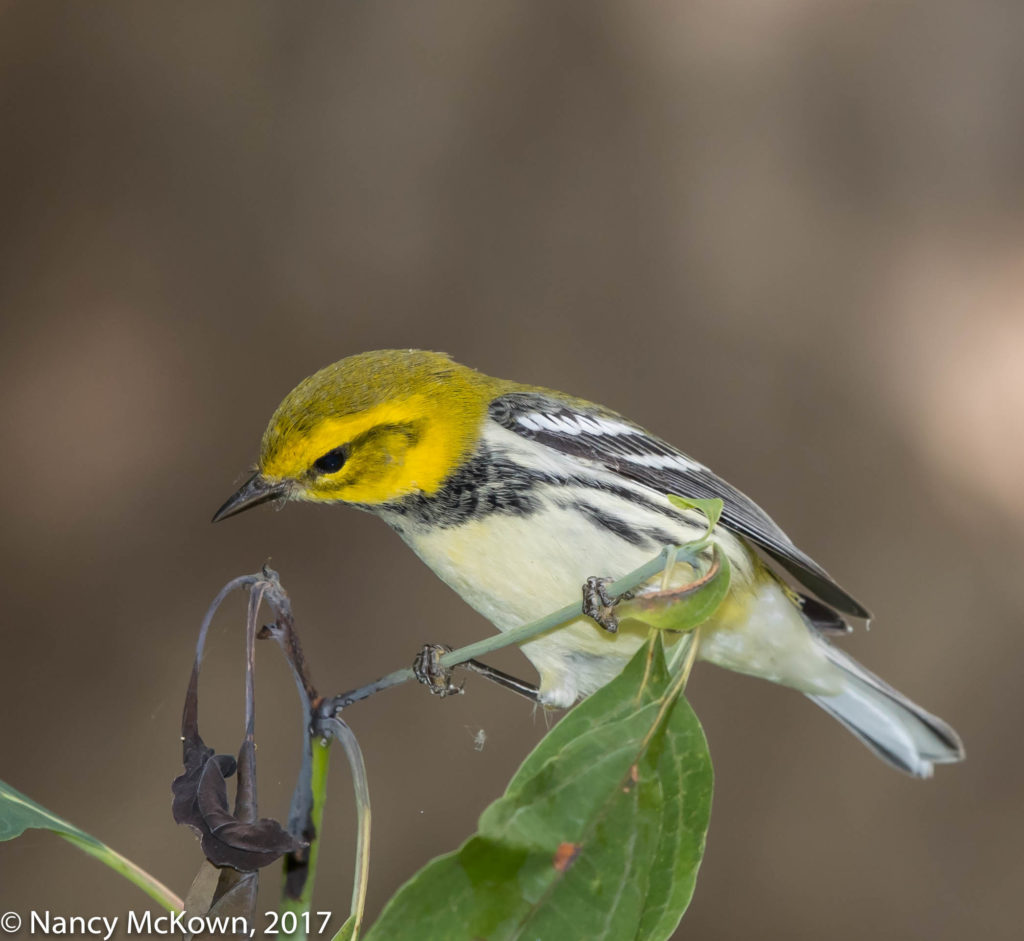Traveling Along, Virtually
So far, warblers have been relatively scarce this Fall. While I wait, I wonder if the devastating hurricanes in Texas, Florida, Mexico and the Caribbean temporarily put the birds’ migratory schedules into a holding pattern.
Bird photographers marvel at the distances and travails involved in the seasonal movement phenomena that is bird migration, yet critical knowledge gaps remain in the how, why, when and where of this spectacle. I hope that one day I might spot and photograph a tiny, durable, battery powered transmitter attached to one of these champions of endurance…. a geolocating device intended to track an entire migration route. These trackers will plot the movements, behaviors and timelines of thousands of bird species on world wide maps. They will allow us to travel along with the birds, virtually.
Photographing a Black Throated Green Warbler
A colorful transient appeared in short order. This little Black Throated Green Warbler perched high in a Sassafras tree that was less than 10 feet away from the tripod and camera. The soft brown bokeh comes from another thicker, taller tree directly behind where the bird sits. Tilting the lens upward with the Gimbal tripod head, I estimate that the distance between the 500mm lens and the warbler was approximately 24-25 feet.
NOTE: Gimbal Tripod heads are smooth and steady swing mounts designed to fit atop tripods and maneuver long lenses easily and quickly. A Gimbal head will support heavy equipment and enable the photographer to easily move it around horizontally and vertically. This includes the weight of not only the camera and long lens, but also the lens hood, the flash and its fresnel extender, battery pack, flash bracket, telephoto extender and various straps.

ISO640; f/8; 1/250 Second.
Shot with telephoto lens pointing upward
Distance between lens and bird
approximately 24-25 feet
Shooting with the Lens Tilted Upward
The plane of the camera’s sensor was not parallel to the subject when I took the shots above…in fact it was substantially below it. So why do these images look like the bird was situated at or slightly above eye level with the camera? When looking up through a long lens, parts of the subject will be at varying distances from the camera’s sensor. Shouldn’t this cause the camera to record a distortion? This bird is so tiny, so possibly its whole body was recorded at the same magnification because there was very little distance between the bird’s head and feet. (Of course, the aperture setting … depth of field … has an impact on the sharpness of the entire image, especially when the camera is not parallel to its subject.)
This doesn’t explain why the bird looks like it’s perched almost parallel to the camera.

The Background is a Nearby Tree Trunk.
ISO640; f/8; 1/250 Second
Lens Pointing Up 24-25 feet
At Camera Level
The Black Throated Green Warbler eventually flew down to the fountain area and I was able to get a few shots of him. Comparing the images where camera’s sensor was not parallel to the subject (see above) to an image that was taken when the bird was situated about the same distance away but at camera level (see below) is one sure way to determine if there is distortion. It is definitely easier to see that the lens was angled dramatically in those first shots. The camera level shot is a much more pleasing perspective.

Warbler at Eye Level with Camera
in This Shot.
ISO800; f/8; 1/250 Second








